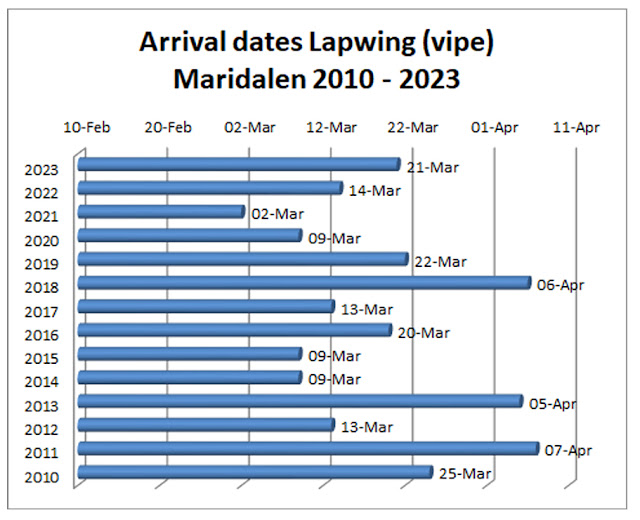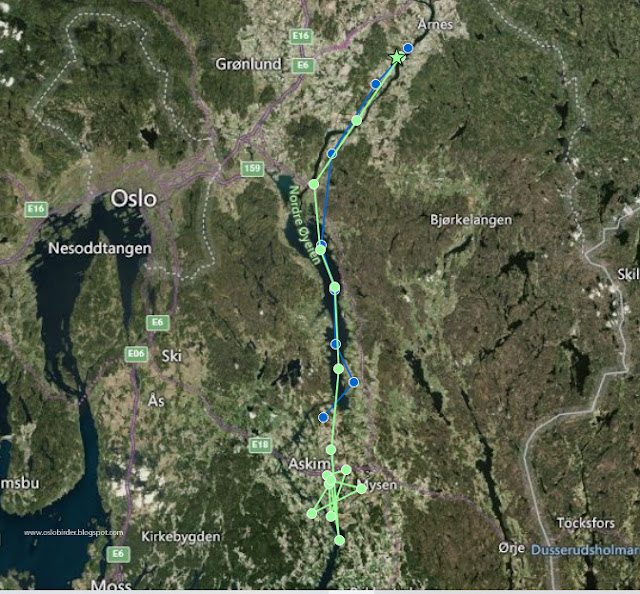In my last post I predicted that I would see my
first Lapwing, Mistle Thrush and Snow Bunting this week. The week is still
early but the first two fell today along with Linnet and Twite and despite lots
of snow on the ground and temperatures below zero in the morning there is a
definite feeling that the gates have opened and nothing will close them again.
I have been following the plots of the two GPS
tagged Taiga Bean Geese excitedly the last couple of days and yesterday (a
sunny day with temperatures rising to +8C in the afternoon) I saw that they had
decided to head north again after a week’s holiday in warmer clines.
Interestingly they had split up the previous night and both birds had spent the
night feeding on fields (normally they roost on water) but the next morning
they headed north independently and followed near identical routes. I went to
look for them today and found only 74 birds along with 18 Pink-feet and a
Barnacle. I noted 6 collars which means 2 that I had seen previously seen were
missing - I still hope that more birds will turn up as the flock size is small
compared to previous years. Hardly any other wildfowl is moving yet though with
only Whooper Swans moving in any numbers and I noted no dabbling ducks apart
from local Mallards.
I went searching for Woodlarks but they do not seem
to be back yet but 2 Great Grey Shrikes were some compensation.
I saw Lapwings at three different sites today including 3 birds back in Maridalen. The fields are still covered in snow and they were stood forlornly on the ice. I suspect that they will now disappear for a few days but will pop in every now and again to see if conditions are suitable. All three looked to be males which would make sense as they usually return first.
 |
| a slighly later arrival date than the average |
 |
| not much food to find there |
 |
| Taiga Beans (taigasædgås), Pink-footed Geese (kortnebbgås) and a single Barnacle Goose (hvitkinngås) back on a south facing field where the snow has melted |
 |
| in this picture the 2 tagged birds 5 (black right leg) & 6 (orange left leg) can be seen together as well as V8 |
 |
| 6U on the right |
 |
| their movements on the 19th when they ended up splitting up |
 |
| and on the 20th when they both flew north and eventually joined up |
 |
| small flocks of Whooper Swans (sangsvane) flying north made a lot of noise and gave a real spring feeling |
 |
| one of 2 Great Grey Shrikes (varlser) which were most likely spring migrants |














No comments:
Post a Comment